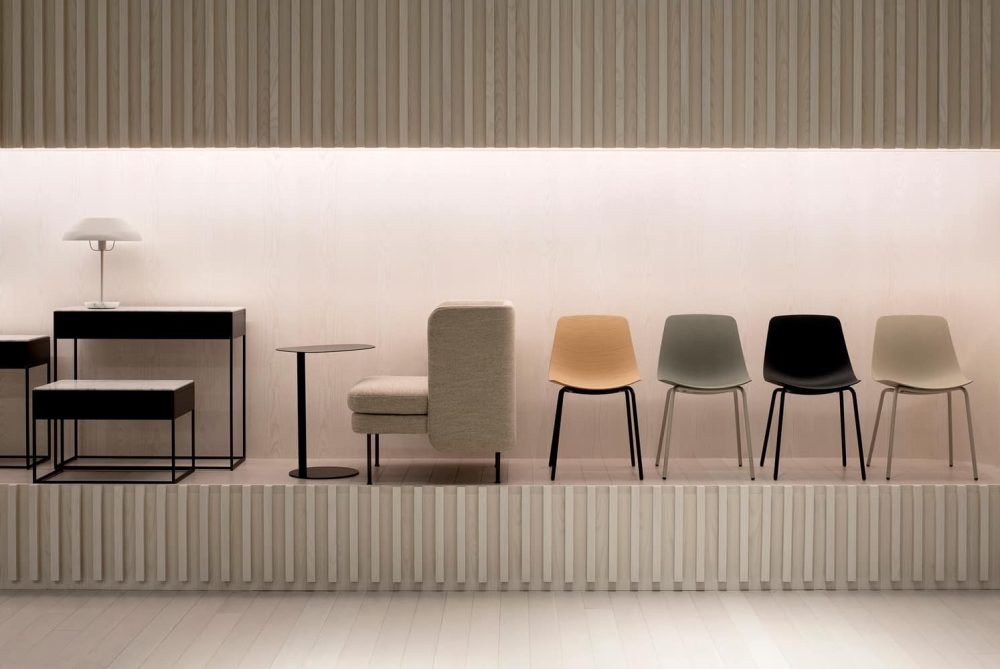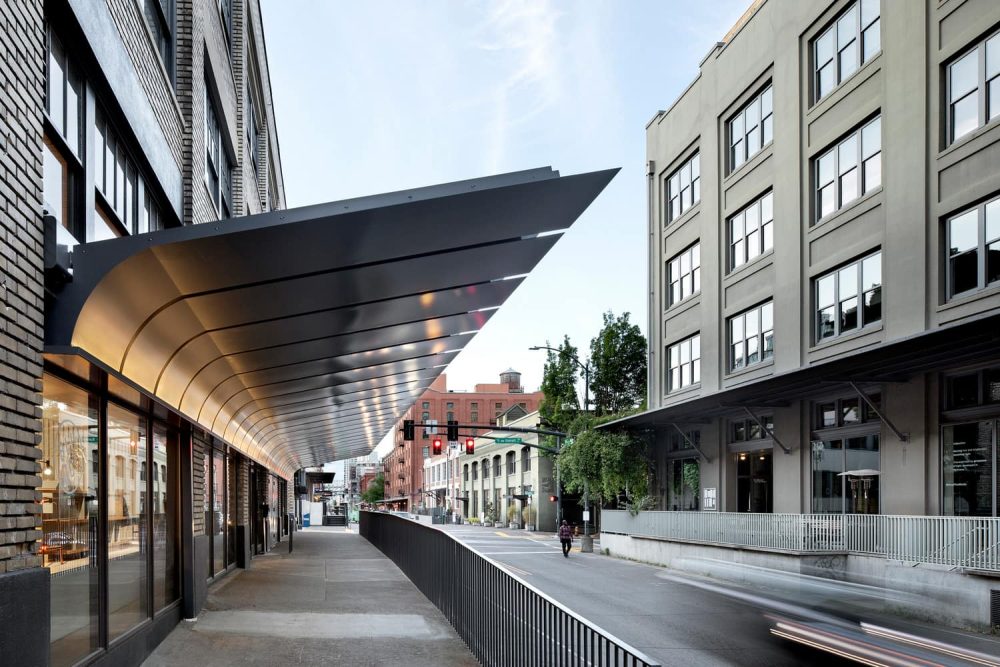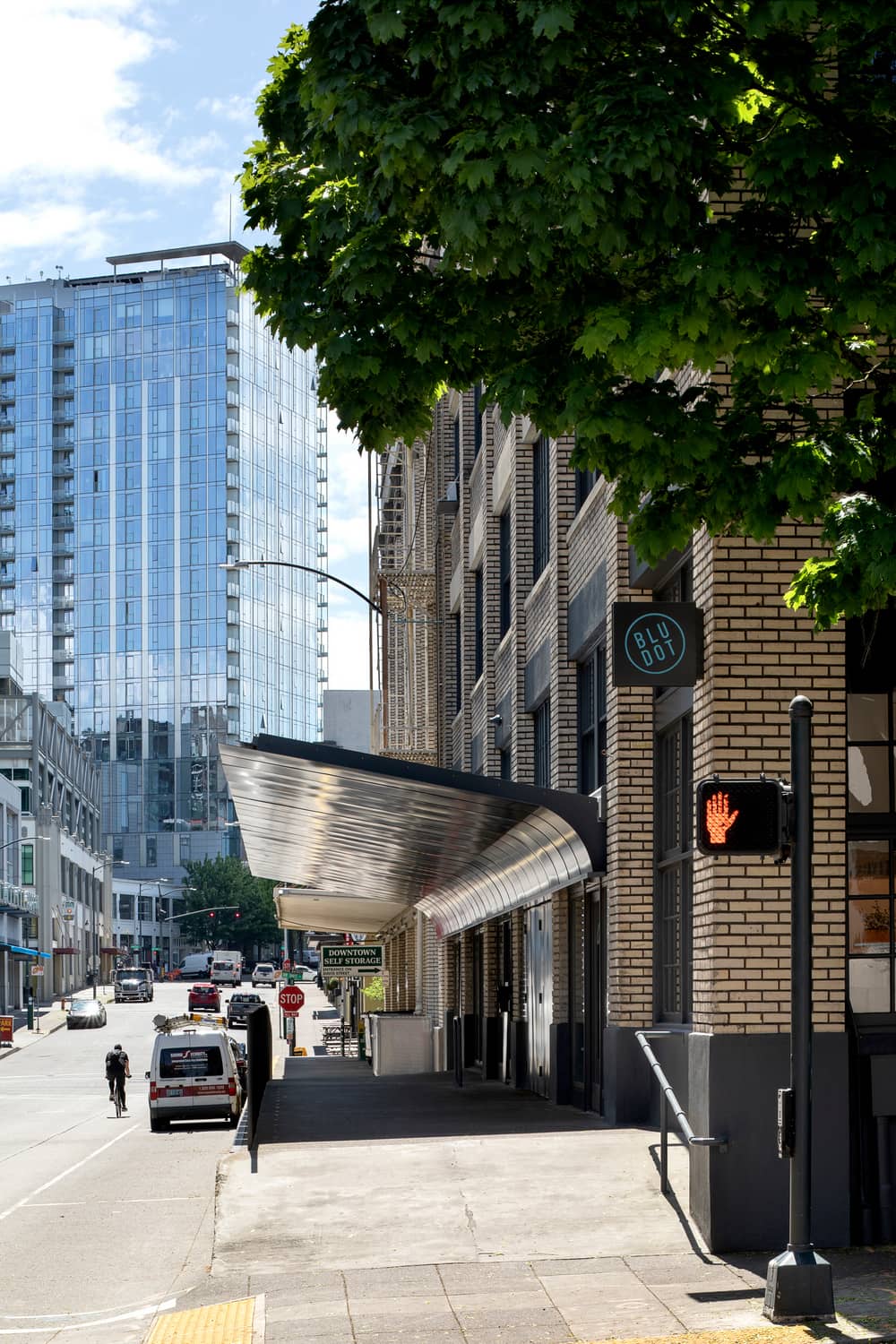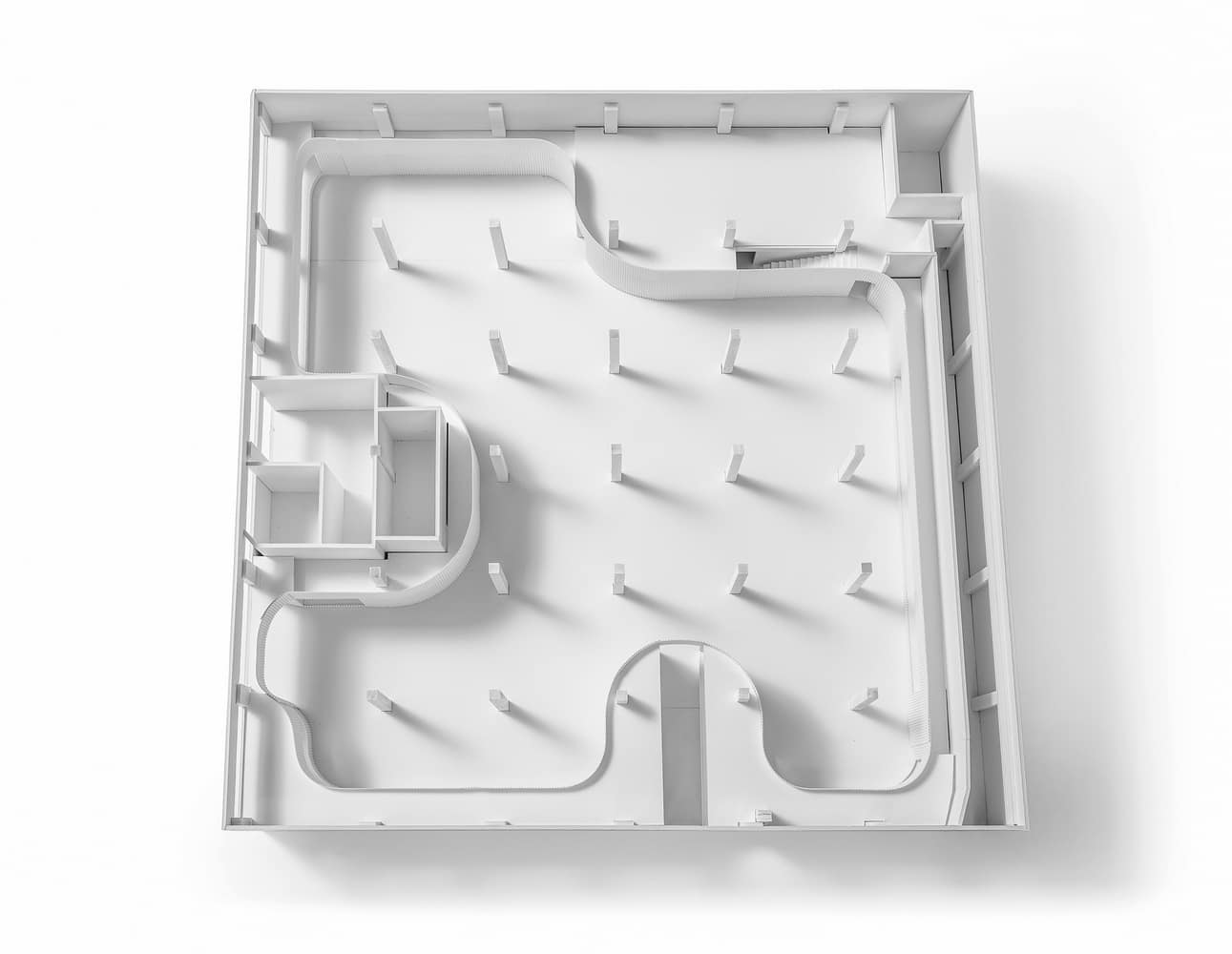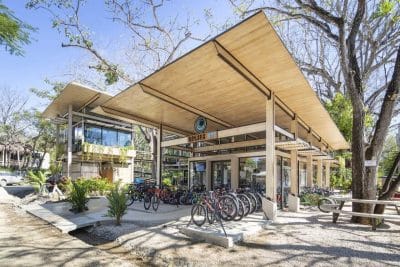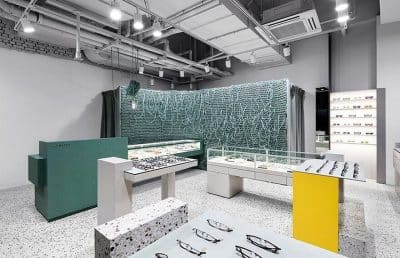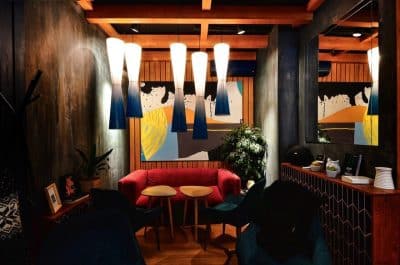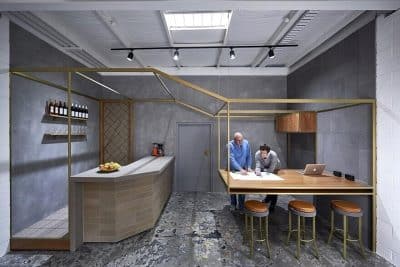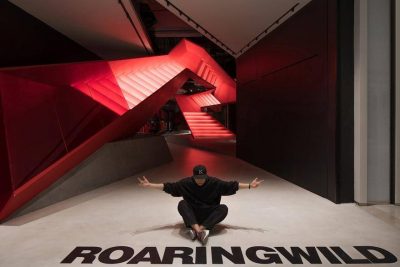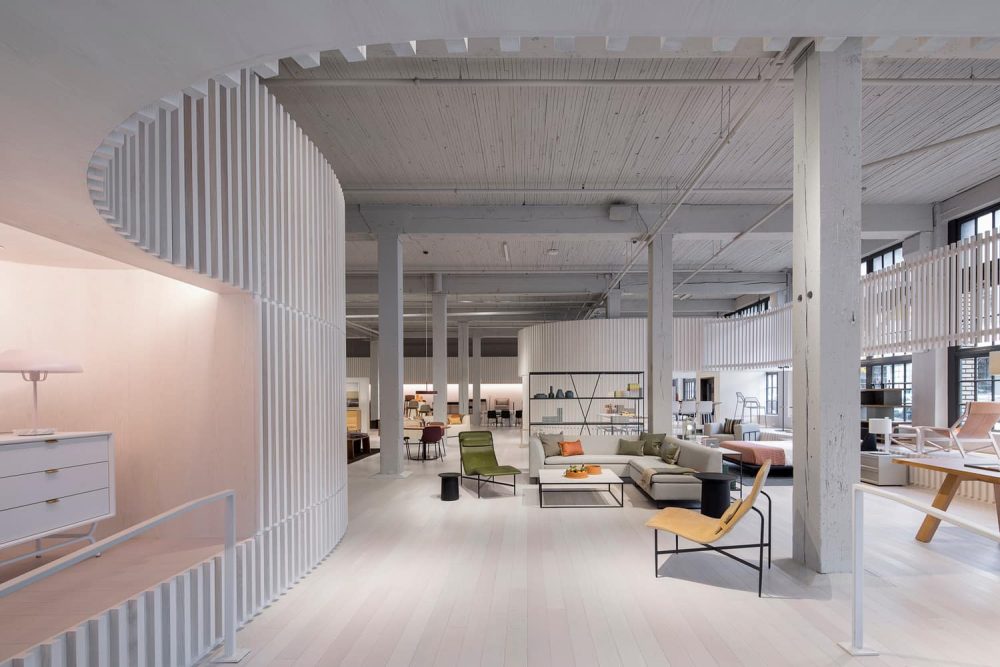
Project Name: Blu Dot Showroom
Architecture: Waechter Architecture
Contractor: R&H Construction
Civil Engineer: KPFF
Structural Engineer: KPFF
Historic Consultant: Peter Meijer Architect
Client: Blu Dot
Location: Portland, Oregon, United States
Photo Credits: Jeremy Bittermann
This showroom in Portland’s Pearl District highlights the character and quality of the furniture company Blu Dot. Built within a historic warehouse, the 7,300-square-foot Blu Dot Showroom was designed to preserve the spirit of the original industrial building, while introducing a newly crafted intervention as a showroom environment.
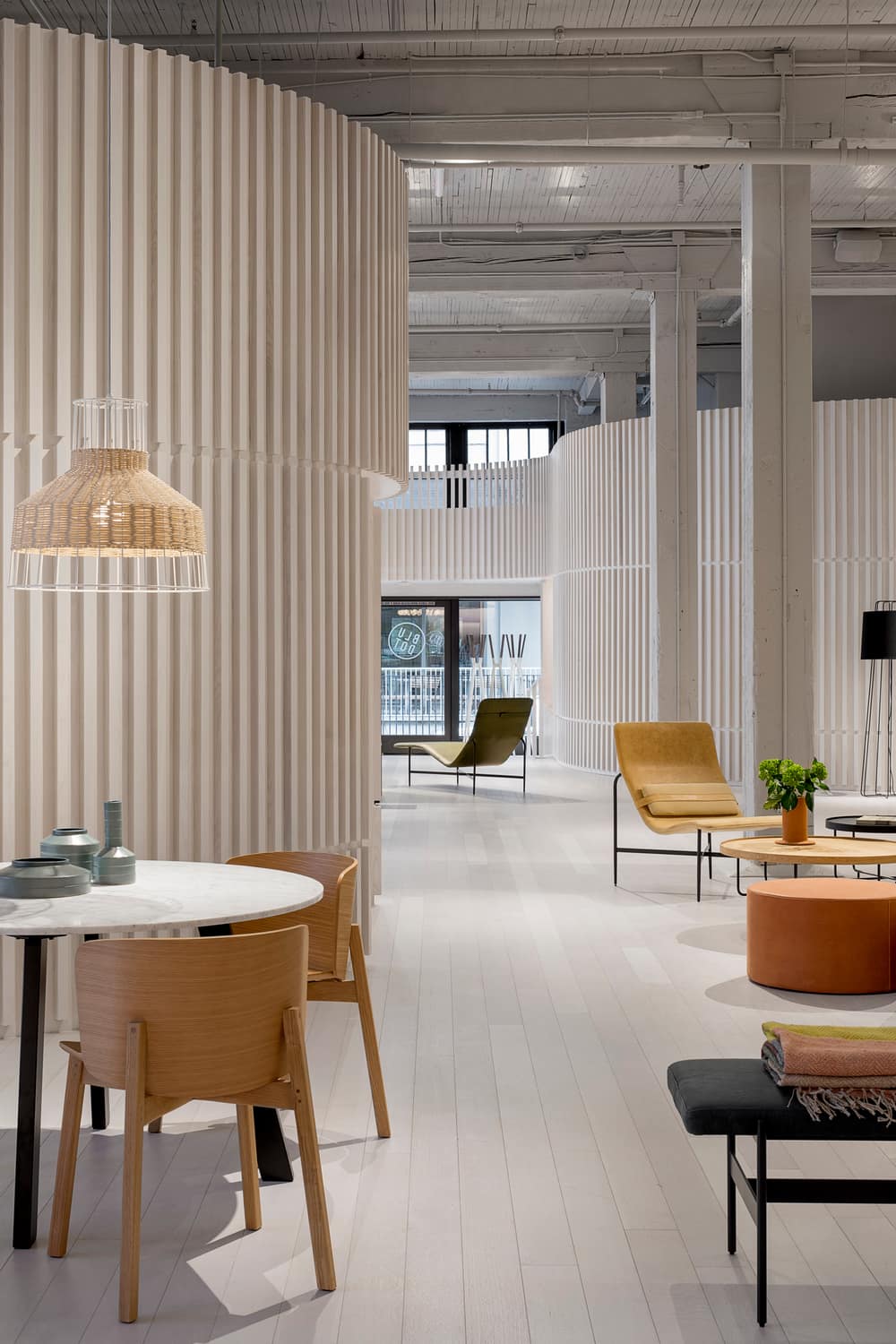
Envisioned as a crafted object inserted into the building, the intervention sits within the space, set apart from the existing structural frame. With a white-washed wood finish that carries from floor to wall, the character of this new form is distinct from, yet in dialogue with the textures and construction of the old warehouse and new furniture throughout.
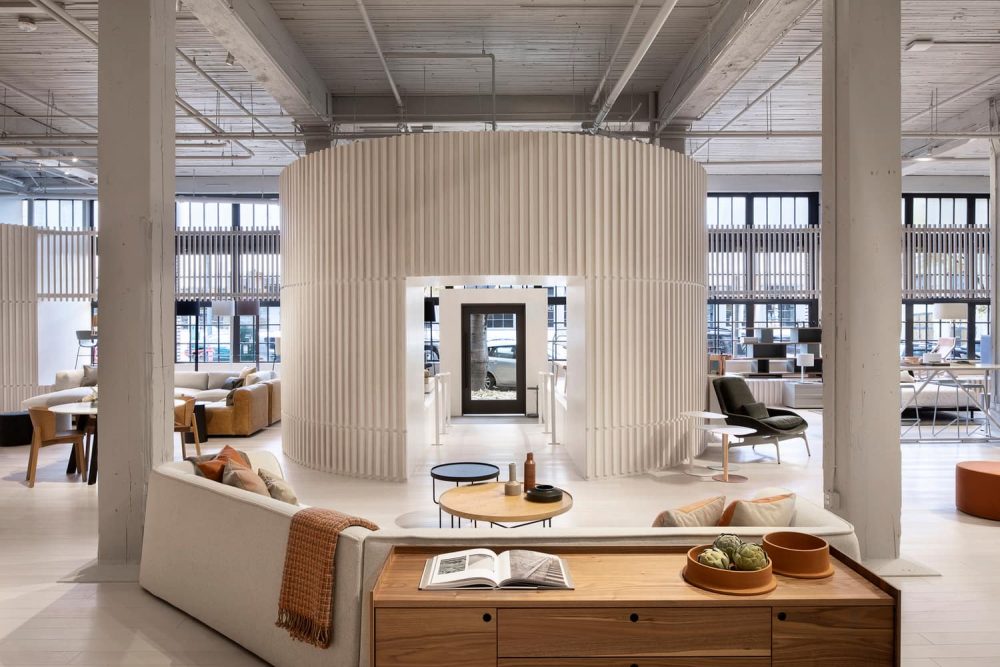
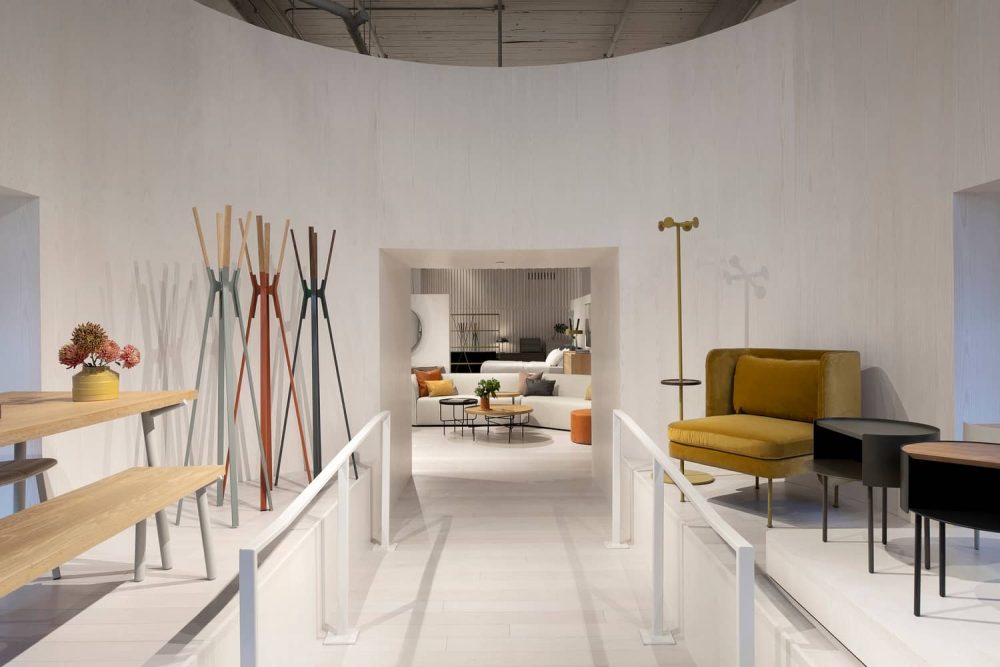
The existing space was a mixture of historic features and an eclectic set of additions. While the building had a clear organization of a pre-war warehouse structure, a series of renovations divided the interior space and disrupted its logic. Rather than compete with the old, our intervention instead works in concert with the building structure, strategically creating elements that bring the original framework to light.
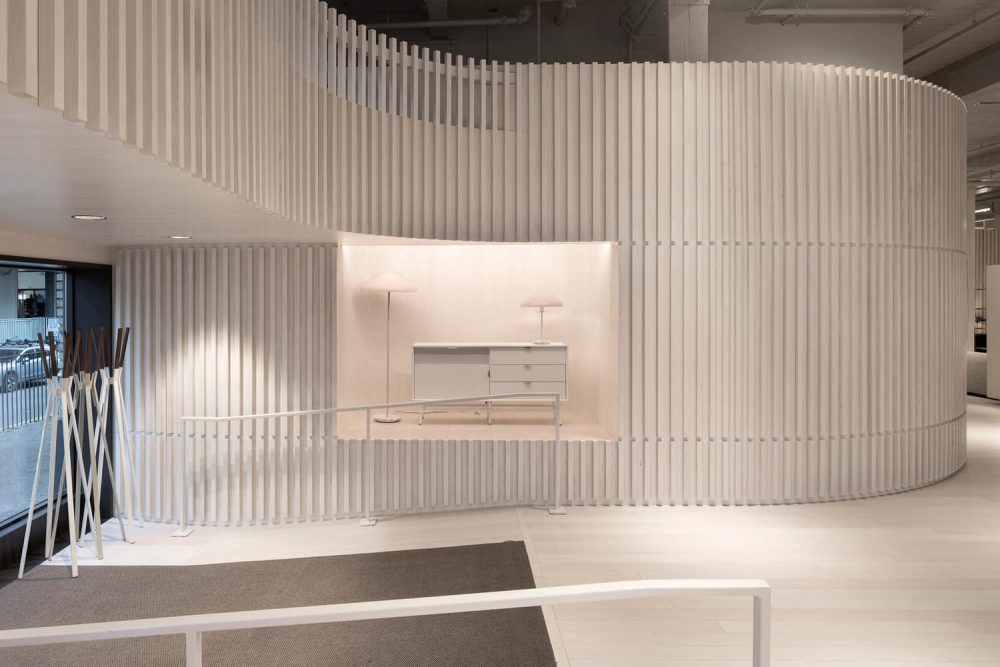
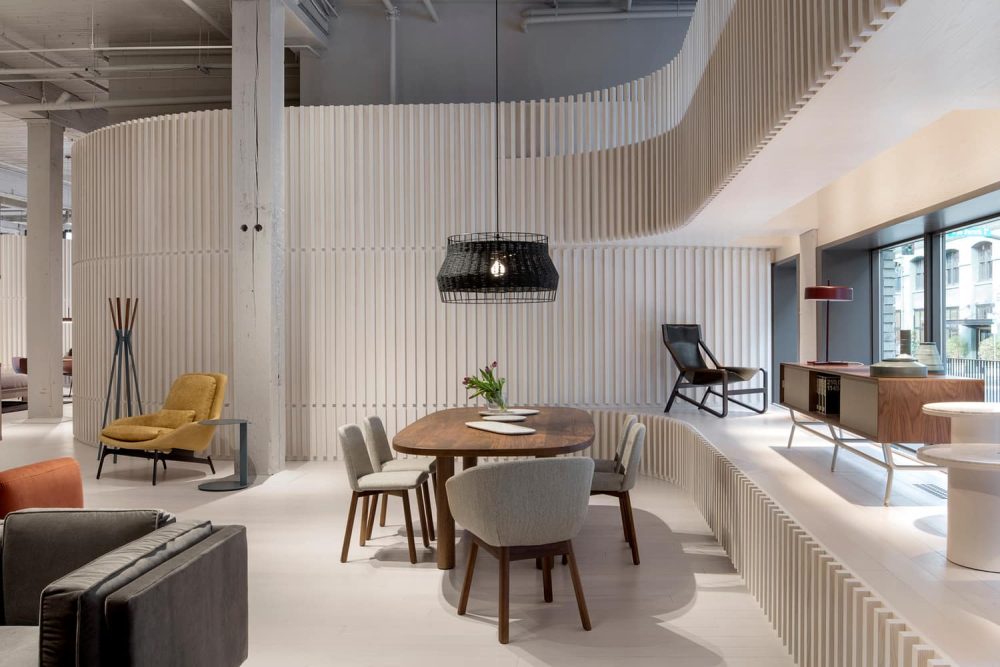
To reveal the old structure, an existing mezzanine was minimized to allow daylight in. A wing of individual offices was removed and infilled bays against the outer walls were opened up for additional visibility.
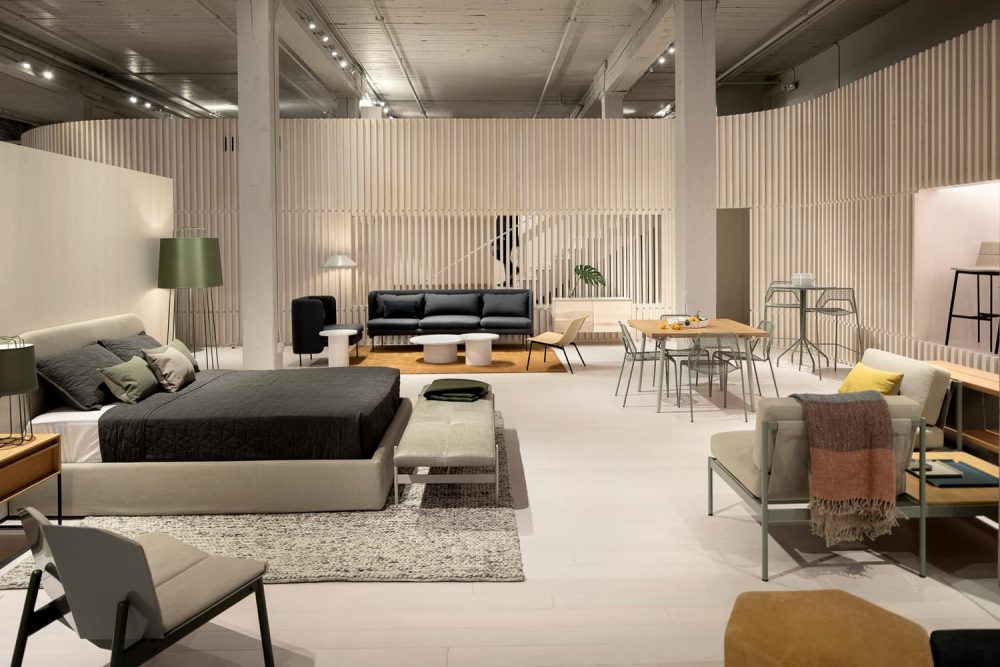
On the building exterior, a new canopy brings storefront, loading areas, and elevator access bays into a singular form and organization. The canopy takes on its own identity, curving downward against the brick facade to frame the new entry to the interior. New wood storefronts sit at the base of the canopy and mark the scope of the intervention. The result is a singular gesture that highlights both the new and the old.
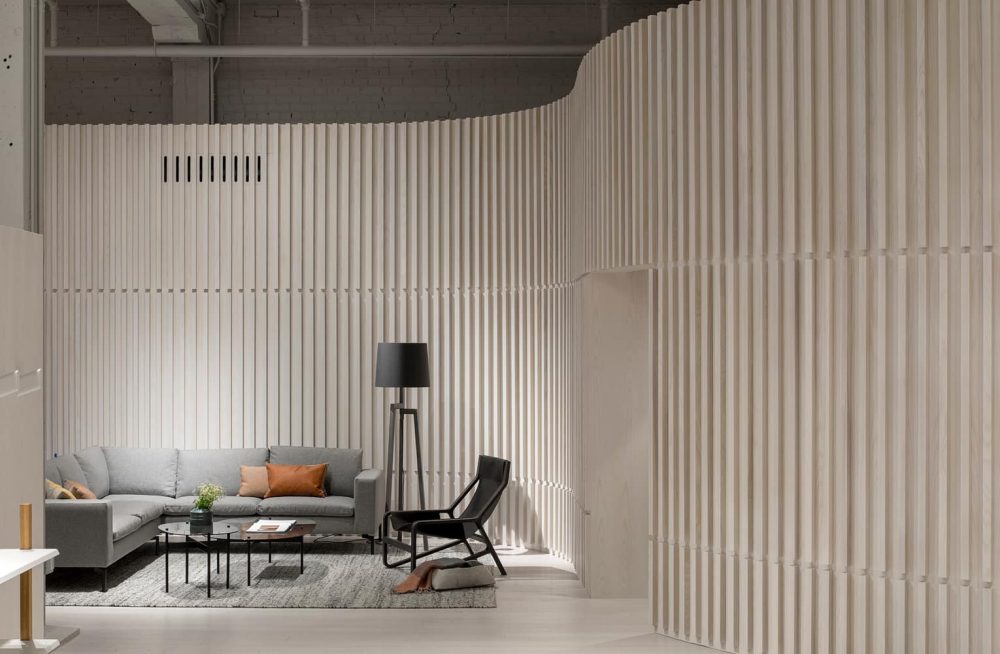
Taken together, the interior and exterior interventions redefine the space and the building’s identity as a complete whole. The result is a showroom where the architecture is evident in concept, form, and detail, yet acts as a textured backdrop for the primary furniture and objects on display.
